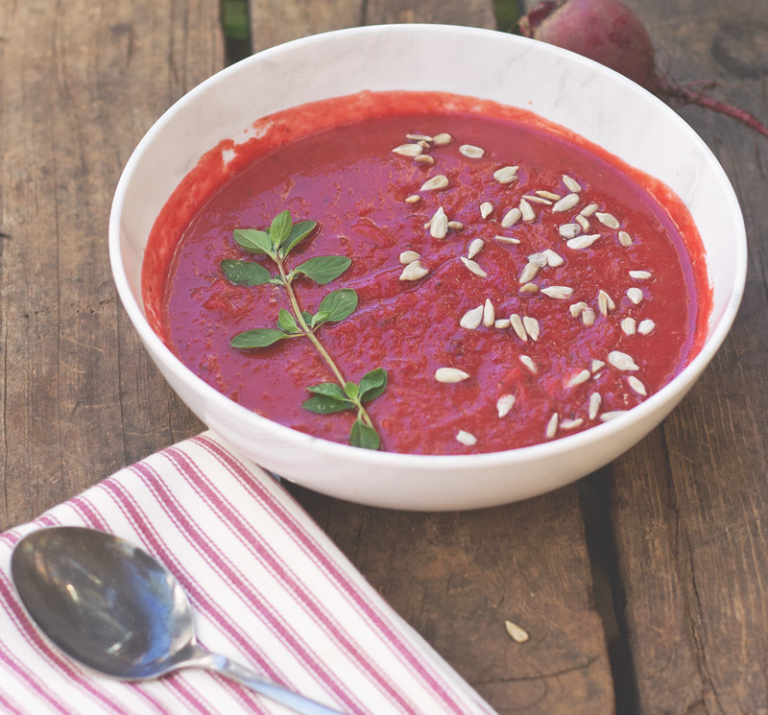Poll #2: Food Budgeting
I loved finding out what temperature y’all keep your homes at in the winter in my last poll. Let me share the results with you.
At what temperature do you keep your home?
- 69-71 26% (7 votes)
- 66-68 26% (7 votes)
- 72 or higher 19% (5 votes)
- 63-65 19% (5 votes)
- 62 or less 11% (3 votes)
Total Votes: 27
So, the majority of you keep your homes at between 66 & 71 degrees. In case you’re wondering I, apparently, fall into the minority on this one. We keep our living room and toddler’s room at 64. We don’t heat our bedroom, so that is anywhere from a chilly 55 to 62 or so in the winter. There are a lot of blankets and sweaters around our home :).
Moving onto my next topic that I am pondering… food budgeting. Because of my experience with our no spend months I am re-evaluating how much of our monthly budget should go towards food. We could spend a lot less on food, I’m sure, but we also aren’t willing to compromise on health. Did anyone else LOVE Michele’s post about their real food grocery budget? It was really thorough and helps me realize that their are others out there who think about their food budget in the way that I do.
Since everyone’s income is different it is helpful to know what percentage of the budget goes to food. That way a comparison can be made, regardless of asking the inappropriate question of “How much money do you make?”
So I, or rather my husband, calculated out the percentage of our monthly budget that we spend on food. Currently we have been spending 16.4% of our monthly budget on food. After December is over I am considering lowering that to 14.6% of our monthly budget. But now I am curious as to what my readers’ (both of you – ha! get it?) food budgets are.
Here is how you calculate your monthly food budget percentage.
Divide the amount of money you spend on food every month by your monthly income. This will give you a decimal number, like .164. Multiply that by 100 and it will give you the percentage of your monthly income you spend on food, in my case 16.4%.
Here is the formula (this brings back horrifying memories of hours spent writing lab reports):
(dollars spent on food/monthly income)*100 = % of monthly budget spent on food
So, today’s poll is:
What percentage of your monthly income do you spend on food (groceries + eating out)?
If you could kindly leave your answers in the comments I will post the results next week and bust out my calculator (or ask my husband) and find out the averages.





We spend 17.5% of our monthly budget on food & food based nutritional supplements. *hangs head in shame* This isn’t simply for the food we eat on a monthly basis, but also for food storage, due to my being the paranoid survivalist type that I am ;o), the money put away each month to pay for CSAs & meat directly from the farm, and food preservation supplies come the appropriate season.
We spend about 9.3% of our gross income on groceries monthly, sometimes a bit more if we eat out. In addition, I spend about another 1.5% on supplements (ordered in bulk from http://www.thecatalog.com to save money). Once a year we also get a half of a grass-fed cow which last time ran us about $1500 for 304 lbs or so. If I were to add that into our monthly percentage, it would make it more like 12.2% monthly. This is for two adults and four children, the youngest of which is still getting probably 75% of his calories from nursing in addition to two solid meals per day. Though my husband is deployed right now, this is the same amount that we spend when he is home. I’ve been able to stock up a bit more with him gone.
Can I ask how you dress your children for bed? I like the house cool for sleeping and have been gradually nudging back the thermostat, currently putting it at 61 at bedtime. But my 2 YO kicks her covers off so I’m afraid to turn the temp too low. My almost 11 MO is a bit easier right now…I layer him in a onesie, sleeper and then a sleep sack, and he usually snuggles with his blankie though it doesn’t stay on him all night. And one of our cats usually plasters herself against his back as well. 😉
Amy – I didn’t count any supplements, woops! That would probably bring our percentage up to right around yours. I am also trying to work out a balance between the summer months of CSAs and farmer’s markets and the winter months when we buy substantially less produce.
Cathy – Our two year old likes to wear his ‘fire truck jammies’. They are thick, cotton footed pajamas. When those are in the wash we double up sweatpants and long sleeve shirts/sweaters. He also has a fairly thick blanket he likes to snuggle with. Our 3 1/2 month old sleeps in a bassinet for part of the night and with me the other part. When in the bassinet he has warm footed pajamas on like his brother, socks on his hands to keep them warm and two blankets snuggled around him. When he’s in bed with me, he’s nice and toasty since he’s nursing and right up against me.
I love that your cat doubles as a baby warmer :).
We work out our budget as my Dad alaus did his and have found his way of thinking to beneficial for food and utilities. Basically you figure out what you need or project to need for each category and then divide this up per pay period, placing money into “accounts” for each area of the budget and keeping track of said accounts on paper. This prevents scrambling for money for a car repair, insurance deductible, medical bill, unexpected utility expense, overdraft fees, or so on, as you have already planned for this and have been paying yourself for just such an occasion.
In the winter, utilities always cost a bit more for our family than during the summer, so I average out what the costs would be every month and then use this amount every month, to either pay to the bills or to place the extra in the “utilities acct” to have it ready and waiting when the more expensive time of year comes around. We do our food expenses the same way. Winter is quite a bit cheaper than summer’s food, especially when you factor in gardening, canning, dehydrating, and CSA expenses, all coming about at once–ouchy! With this system, there are precious few ‘surprises’ of hidden expenses for either of these two categories.
I probably did a rotten job of explaining his budgeting system, but thought I would give it a try as this system has worked for my parents for decades now and has some good principles behind it, IMHO. :o)
I would say we spend about 13% of our income on food and eating out. I estimate because I basically withdraw $300 every two weeks and that is my money for any food we have or blow money. I almost always splurge on non-food items with this amount, but it also used for “eating out”. When I do the actually calculations it comes out about 15% but like I said that cash is not all food. I am thinking of breaking it down a little more. An envelope for clothing/eatingout/ blow money etc.
For now I just stick to this amount and when I need something it has to come from that amount..this week I got a hair cut so $20 was spent out of this money on that expense. I would say the actual food part is about $125 a week. We are a family of 6 with one child having severe allergies. He can not have milk products so I spend a good chunk on soy/rice milk and soy products like cheese plus diapers for him alone. We also are big milk drinkers–about 2 to 3 gallons a week. We buy lots of fruit and that s not cheap. I should garden!
Sorry so long, but I figure you are wanting a feel for what people ar doing and why.
According to my Quicken reports, we are keeping our percentage for food & eating out to around 9%. This is for a family of 7(2 adults & 5 children 12yo-2yo). We rarely eat out since it takes about $25-$30 to feed all of us a nice meal. The kids have found that my homemade meals are cheaper and better than what they can get eating out. 🙂
I did a post at the end of October about what we spend on average for groceries(not including eating out), you can read about here….http://glimpseofsonshine.blogspot.com/2008/10/ten-months-of-groceries.html
Great poll! I found your blog via Simple Mom.
Budgeting for food is the hardest thing for me, because I place such a high priority on the quality of what I buy. But it can be so discouraging to be trying to budget well, and to read articles online where people are somehow feeding 10 children on 100 dollars a month!
After running your calcuation, I found that our family of five spends close to 20% of our income on food and dining out! (And we do *very* little dining out these days.)
Thank you so much for that link to the Real Food Budget… We get raw milk, too, and the costs really add up. But I agree with you that we’re investing in our health and well-being.
There is only 2 of us in our house. So our monthly food budget is only 4%. I have slowed down on the pre-package foods and concentrated on meats and veggies that I can freeze.
I believe in buying healthful food for my family, but don’t buy organic. I grew up on a farm, and don’t really buy the organic movement except on produce. Milk is one of the safest foods…and it goes through rigorous testing before it can hit the shelves. I feel safe buying my family the non-organic stuff..and it fits our budget much better. Our monthly grocery bill is 14% of our monthly income. If I were to buy all organic versions of the food I purchase, we would quickly eat away our savings.
Thanks for sharing your “jammie” info. Maybe I need to shop for our 2 YO! Our little guy also slept with us/me (hubby deployed when he was 2 months) the first 6 months so was warm next to me in the flannel sheets. And yes, the kitty has to earn her keep somehow! After all, even she eats organic food, as do all our many pets.
This is a wonderful topic – and one I really need to get a handle on. Is this counting just food – and not the other things such as shampoo, etc that may also be purchased at the grocery store? I will calculate just my food and let you know what the percentage is – – – I’m afraid it is going to be on the high side.
But the good news is that we keep our heat at 65 – but are blessed that it doesn’t get all that cold her in the Texas Hill Country. Well – let me clarify that, right now at night it’s 39 degrees outside but it’s dry not damp here so that makes it not feel so cold. And tomorrow it will probably be in the high 60s low 70s (day time temp) which will really warm up the house during the day.
Thanks so much for all the info you have been providing on no spend months and budgeting. It is so needed at this time.
All the best,
Mary
In doing a quick calculation, I estimate that we spend about 10% of our monthly budget on food, eating out and school lunches. We are a family of 4 — 2 full-time working parents, and 2 daughters (15 & 12 yo). This 10% also includes household items and toiletries so it’s not a “true” food budget. I have diligently eliminated processed items and cook from scratch 95% of the time now. (I’m convinved this has made a huge difference in our health as it’s literally been years since any of us have needed a sick day). It’s not easy w/working full-time but our food choices are important to me so I spend a portion of my weekend in the kitchen preparing for the upcoming week. I’ve also learned how to stock the freezer with homemade ‘heat & eat’ meals.
Hi Shannon,
Our food spending varies a lot from month to month. I just picked up 10 local chickens because there won’t be anymore until spring. And I also like to bulk shop for grains and legumes.
Our spending roughly works out to about 13%-14% if I average it out.
I buy raw milk (4 gallons/week), cream (2 quarts/week) and butter (1 lb/week). It is worth the extra cost to us!
We spend about 17.6% on whole/real foods and supplements for our family….sometimes that includes household items…sometimes not. We are a family of 7 ith 6 eaters…my kiddos eat LOTS!
Ashley’s last blog post..Babycakes! Chubba~Bubble! Mr. Man!